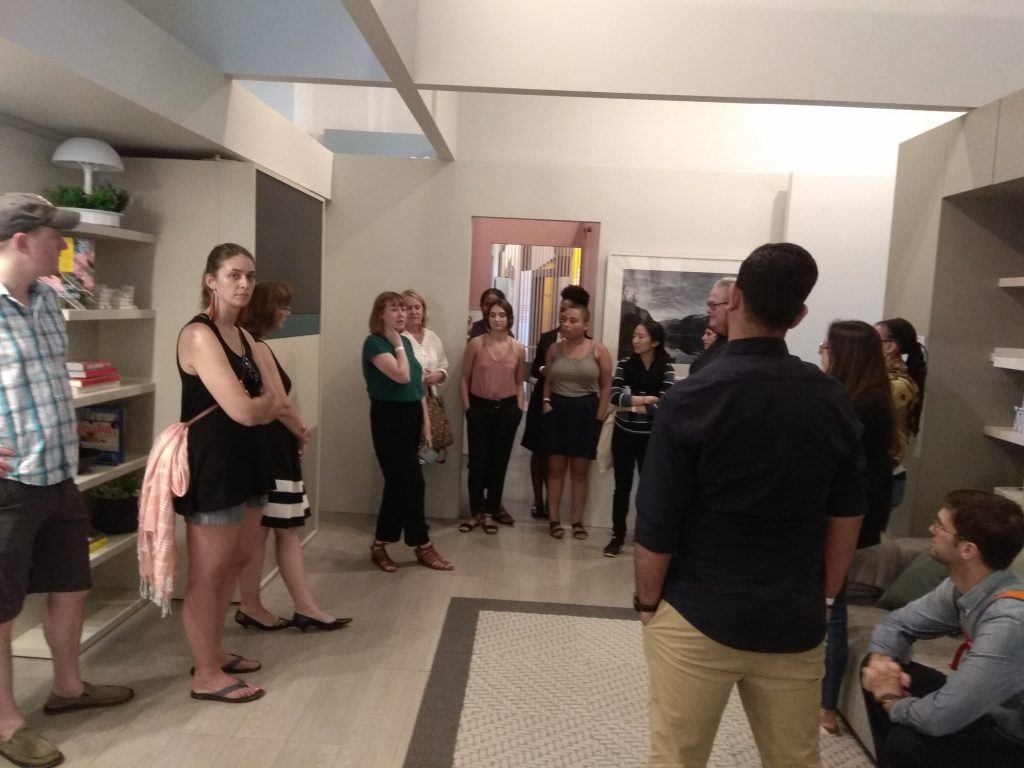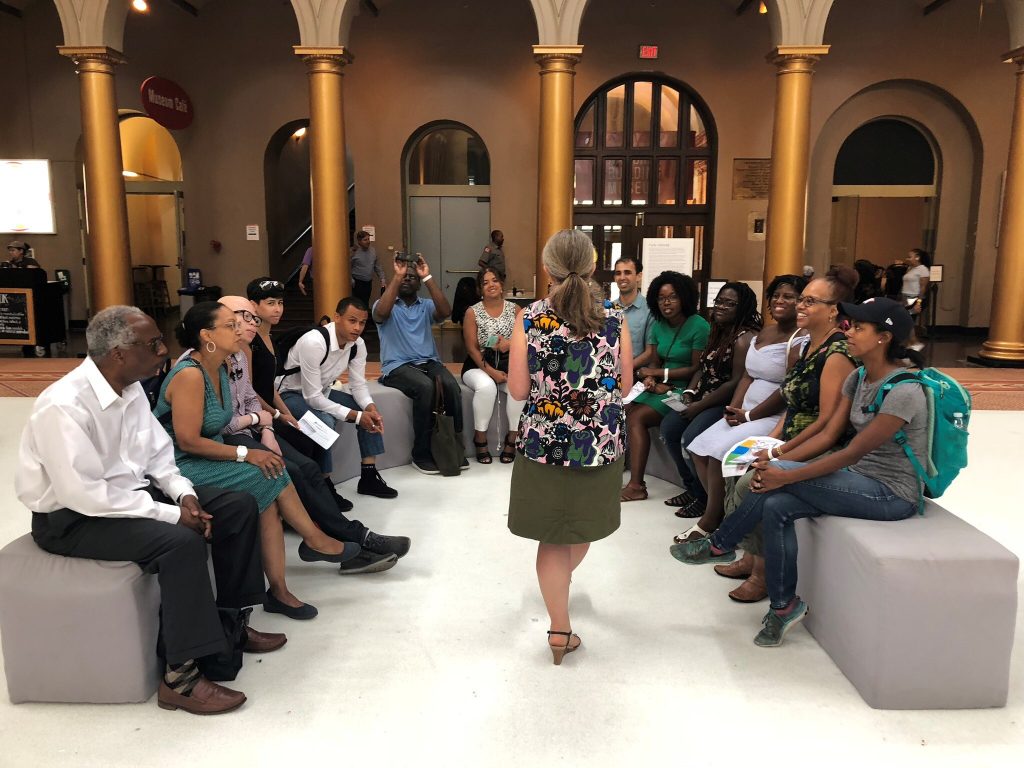It was 7.30 am on a Friday morning, on July 27, 2018, when a bus with around 45 housing enthusiasts left the city on a road trip to Washington D.C. The group was an eclectic mix of government, nonprofit and for-profit practitioners, academics and advocacy leaders that work in the housing industry in NYC. All 45 people agreed that Friday was the perfect day to go all the way to D.C. to explore the National Building Museum.

Created by an act of Congress in 1980 the National Building Museum, a private non-profit institution is housed in a historic building originally built for the Pension Bureau in 1887. The museum is dedicated to hosting and curating exhibitions around the topics of architecture, design, engineering, construction, and urban planning.
The primary purpose of this trip was to visit CHPC’s ‘Making Room’ exhibition now housed in the National Building Museum in D.C. What started as a long-term research initiative by exploring how demographic change is affecting the household and how different housing typologies can be used as a tool to satisfy emerging housing needs; turned in 2013 into a 150,000 visitors exhibition in the Museum of the City of New York lasting in total nine months.
Due to the enormous success and interest from other cities, and towns across the U.S. CHPC decided to cast the same lens and research onto a national scale analysis. The national exhibition in D.C. opened in November 2017 and will run until January 2019.
CHPC’s research shows that unprecedented shifts in both demographics and lifestyle have fundamentally transformed the idea of the American household. Today, approximately one-third of our households are single adults living alone, and the number of those who live with roommates, or in extended family situations, is on the rise. Our population is also aging rapidly and will need new housing options that can support aging-in-place with diminished physical or cognitive abilities.

The housing enthusiasts had the opportunity to be guided by our deputy director Sarah Watson and the museum’s curator Chrysanthe Broikos. While the group explored the ‘Making Room’ exhibition, the guides explained the necessary background and research that put such an endeavor together. The visitors also had the unique chance to explore the Open House developed in partnership by Resource Furniture and Clei.
Featuring a hyper-efficient layout, smart technologies, movable walls, and multifunctional furniture, the Open House demonstrates how a flexible space can meet the needs of a variety of todays fastest-growing and underserved households. To showcase how this flexible space can adapt to seamlessly accommodate three entirely different living arrangementsroommates, an extended family, and a retired couple.

In addition to the Open House, the exhibition highlights cutting-edge projects that housing entrepreneurs (architects, designers, housing advocates and policy-makers) are taking to expand our housing options, including micro-apartments; shared housing; accessory dwelling units; tiny houses and cohousing.
The group also had the opportunity to visit two other exhibitions at the museum: ‘Evicted’ and ‘Secret Cities.’
The ‘Evicted’ exhibition was produced in collaboration with Matthew Desmond, professor of sociology at Princeton University, and based on his best-selling book “Evicted.” The exhibit offers an immersive experience bringing visitors into the world of low-income renter eviction in the U.S. With the help of video stories, photographs, and striking graphics; the exhibition provokes visitors to face the enormity of a complicated subject while also calling people to action.

Lastly, the ‘Secret Cities’ exhibition tells the story of the enormous urban planning feat that is was for the U.S. government to build and keep three secret cities responsible for the development of the atomic bomb during WWII. By the end of the war, more than 125,000 people lived in the three cities that had been built from scratch on these sites. These cities appeared on no maps, and the federal government did not acknowledge their existence adding to the air of mystery surrounding these Secret Cities.

The group returned to NYC on the same day, needless to say, it was a long one, but then again, how often do 45 housing enthusiasts and strangers, travel together to another city to be more informed on the complicated housing issues at hand? The team at CHPC is delighted to have facilitated and hosted the trip and will hopefully see all of you again soon.
Don’t forget to make your way to the ‘Making Room’ exhibit this year; it will be open until January 2019. For more details see here.
